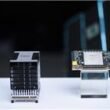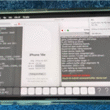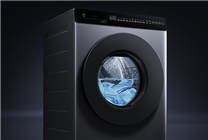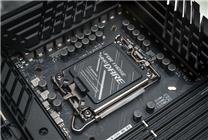The Future of Mobile Phones: Entering the 10,000mAh Era
Summary:
- The mobile phone industry is transitioning toward higher battery capacities, with many devices now featuring batteries of 7,000mAh and above.
- Honor’s new Power 2 smartphone sets a remarkable standard with a groundbreaking 10,000mAh battery, redefining user expectations for battery life.
- As manufacturers compete in the "battery capacity arms race," the balance between lightweight design and battery longevity remains a key consideration.
The mobile phone market is rapidly evolving, with manufacturers increasingly prioritizing battery capacity alongside performance, imaging technology, and fast charging capabilities. The current trend has seen iterative models sporting batteries ranging from 7,000mAh to 7,500mAh—an impressive feat that blurs the line between smartphones and power banks.
Historically, the debate centered around whether a lightweight design or extended battery life is more critical to the user experience. Some brands have championed minimalistic designs by opting for "6-character" battery capacities, claiming that they enhance usability. However, recent trends suggest a shift in user preferences toward more substantial battery power. Ultimately, consumers are increasingly prioritizing reliability, as no one wants to experience a dead phone at crucial moments during their day.
Honor has made a bold statement with its upcoming Honor Power 2, equipped with an astonishing 10,000mAh battery. This marks a significant milestone as the first smartphone to enter the 10,000mAh range, offering an unparalleled level of power that can reportedly sustain extensive use—imagine a device that could travel from Beijing to Shanghai and back without the need for a recharge.
Previously, Honor demonstrated its commitment to long battery life with the Honor Power, which featured an impressive 8,000mAh Qinghai Lake battery. The leap to 10,000mAh is a bold move that essentially eradicates what users refer to as "battery anxiety."
A noteworthy aspect of this innovation is the use of silicon-carbon negative electrode battery technology, which ensures not only high capacity but also stable performance across various extreme environments. For instance, in sub-zero conditions, the battery can provide up to 31 continuous hours of talk time, while it can sustain more than 27.5 hours in sweltering temperatures of 55 degrees Celsius. This makes the battery particularly appealing for adventure enthusiasts who require reliability in challenging conditions.
From a configuration standpoint, the Honor Power 2 is positioned as a mid-range smartphone and is expected to be powered by a new Dimensity processor. It will feature a 6.79-inch 1.5K display and a 50-megapixel main camera, ensuring that users will not have to sacrifice performance or imaging quality for extended battery life.
As we ponder the future trajectory of battery capacity in smartphones, several questions arise. Will manufacturers continue to chase higher battery capacities at the expense of design, or will there be a shift back towards achieving a harmonious balance between lightweight aesthetics and longevity? This evolving dynamic will undoubtedly shape the next phase of the mobile phone market.
In my opinion, if achieving a battery life close to 10,000mAh is possible, it may be worth accepting a bit of extra thickness. After all, in this increasingly connected world, battery power is king, and the necessity for continuous connectivity cannot be overstated.
As this "battery arms race" unfolds, it will be fascinating to keep a close eye on new innovations and offerings in the mobile industry. What lies ahead may very well redefine our expectations and experiences with mobile technology.








